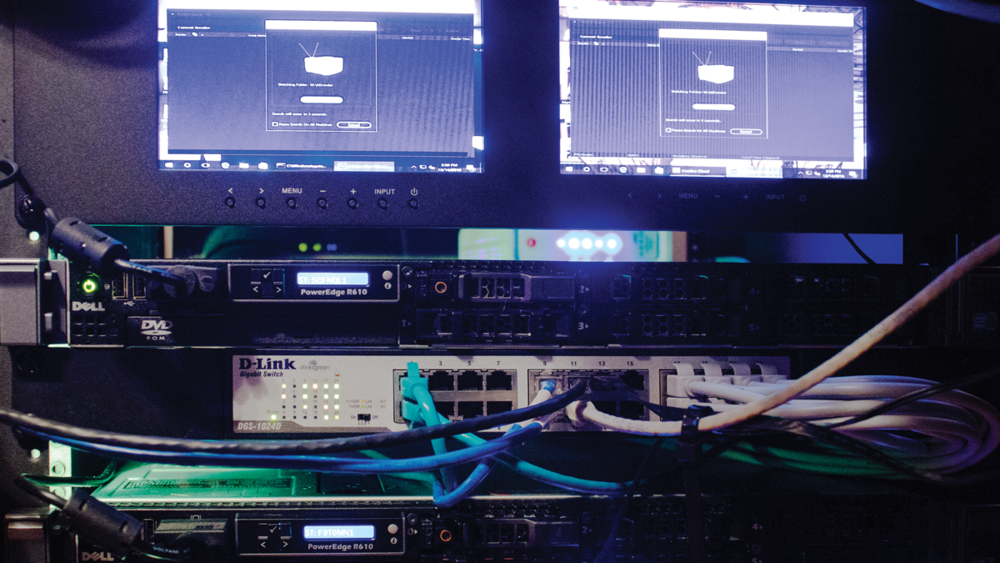What Is Computer Rendering? Features That The Rendering System Should Have
Rendering Is One Of The Most Important Uses Of Computer And Computer Graphics. But What Is Rendering, And What Features And Specifications Should A Rendering System Have?
Join Hardware City to answer these questions and explain the essential points in choosing and closing the rendering system.
Rendering is one of the specialized tasks done with a computer’s help, so users need a rendering system or particular case for Rendering.
In the following, we will try to provide you with valuable and practical tips about Computer Rendering.
What is rendering?
Rendering in computer graphics means image production using software models. In other words, Rendering means converting three-dimensional or two-dimensional models designed or produced by computer software into images. This is a simple definition of the concept of Rendering.
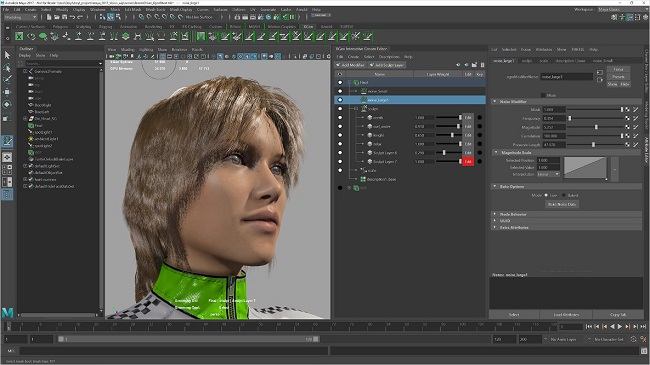 Maya program
Maya program
Rendering is done by the engine (Renderer) of the rendering software or program, which is a very delicate and precise work relying on the laws of light physics, human vision, mathematics, and computer engineering. Therefore, the rendering computer is responsible for the processing load and heavy work.
Types of computer rendering
The first type of Rendering is pre-rendered images or objects. For this, the models are already rendered, and only you see the output. For example, games’ images, designs, animation, etc., are all already rendered. Since the Rendering is already done, you only see the output, which doesn’t require heavy processing or generating time.
 A computer-rendered image
A computer-rendered image
The second type is real-time Rendering. In this type of Rendering, the scenes are rendered and generated the moment you view them. The most familiar example isis video games, where the game engine renders and displays each frame using the processor and graphics card.
Next, I will explain why we need a rendering computer and the difference between rendering and gaming systems.
The difference between modeling system and Rendering
It is better to be aware that 3D modeling is different from Rendering. 3D modeling is an active process in which you view a particular scene by navigation. It is better to describe it with an example.
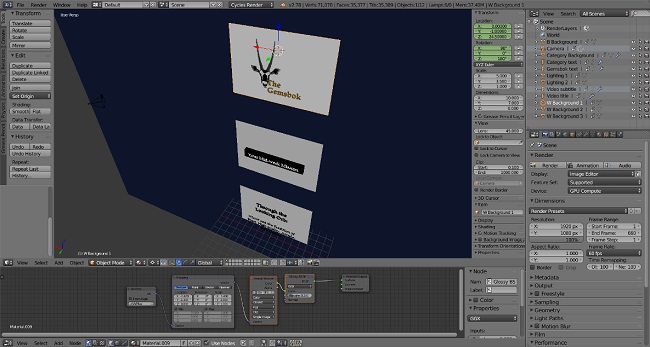 A Blender project
A Blender project
Imagine that the architect has placed in front of you a 3D model of the house he wants to build for you. You can visit different places in this house or view them from different perspectives. Here you are dealing with 3D modeling that relies on heavy calculations and processing.
In 3D modeling, processes or calculations are mainly performed in the central processing unit (CPU) and by only one processing core. In this type of processing, various elements and objects of the scene are usually subject to certain hierarchies and must be rendered and displayed in a particular order. For this reason, it is generally impossible to entrust different parts of calculations to multiple processing cores, and often only one processing core is involved. This is a critical point in choosing the specifications of the rendering case.
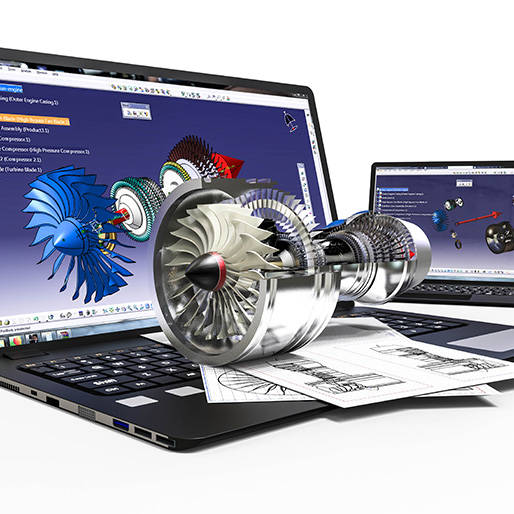 3D computer modeling
3D computer modeling
In short, it can be said that for 3D modeling, you need a processor with an updated and optimized high-frequency microarchitecture. A processor with a high frequency and single-core performance is much better than a processor with more processing cores. The higher IPC of the microarchitecture and the higher boost frequency are far more effective than having more seats. What was said about animation and computer design (CAD) also applies. or
 A case for Rendering
A case for Rendering
A processor with faster cores and a higher frequency usually increases the speed and responsiveness of the Viewport of design applications.
Rendering is a heavy and complex task for the computer; therefore, depending on the size and type of the project and, of course, the power of the rendering case, Rendering may take hours to days. What has been mentioned makes us need computer rendering.
The difference between CPU rendering and GPU rendering
Standard rendering engines are divided into two categories based on their reliance on hardware: CPU -based or CPU-based and GPU-based or GPU-based, which is critical in choosing a computer for Rendering.
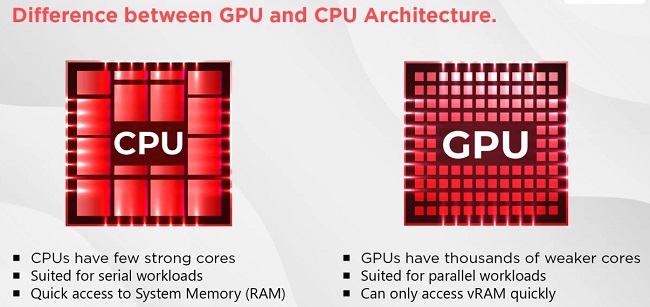
The default rendering engine of most applications is CPU oriented. As you might guess, in CPU-dependent Rendering, the rendering engine is entirely or primarily dependent on the CPU, and the CPU performs its calculations. In this case, the processor is almost completely stressed during Rendering.
On the other hand, in GPU-based or GPU-based Rendering, the high computing power of your system’s graphics card is used. While a powerful CPU can have up to 64 processing cores, possibly running 128 threads, a graphics card like Nvidia’s GeForce RTX 4090 has over 16,000 processing cores.
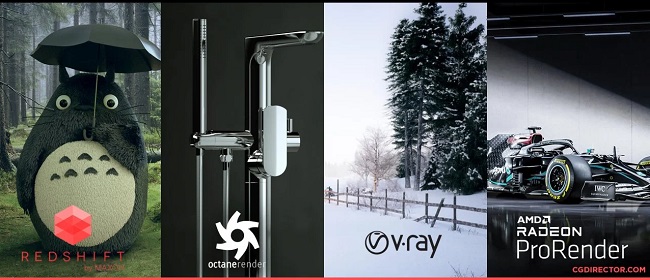 GPU rendering engines
GPU rendering engines
It should be noted that it is not always possible to use 100% of CPU and GPU processing power and depending on the conditions, CPU and GPU are used in different proportions. In many cases, hybrid Rendering (combined CPU and GPU) is not optimal.
Rendering computer features and particular rendering case
The most crucial point in choosing a specific topic of Rendering or causing a computer is to pay attention to whether the rendering engine is CPU or GPU-oriented. Of course, if you can migrate from a CPU-based rendering engine to a GPU, it will likely benefit from a significant increase in rendering speed.
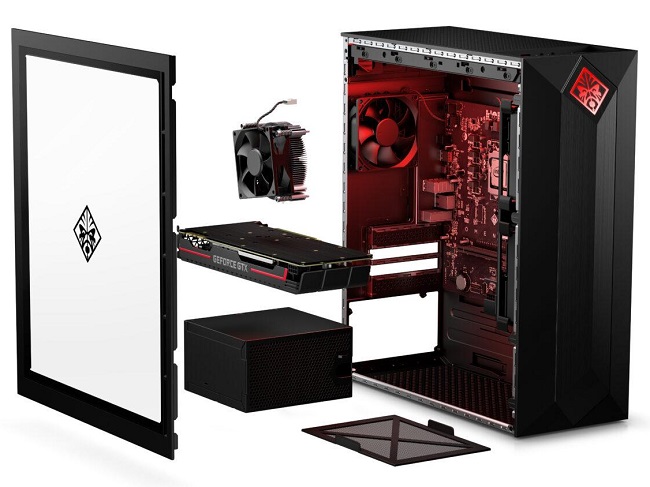
It is unnecessary to pay attention to the rendering engine and the prerequisites of the 3D program you are using in choosing a rendering computer to test results or not spend unnecessarily. For example, a 2 million tomans graphics card may not significantly differ from your use of computer rendering with a 100 million tomans graphics card, which may be an additional or unnecessary cost.
Choosing a processor for computer rendering
Rendering is a purely computational or processing-based task, so it’s not out of the question that Rendering is extremely hungry for higher processing power. However, not all processors are equally suitable for computer rendering. At the same time, one CPU may be ideal for you but not another.
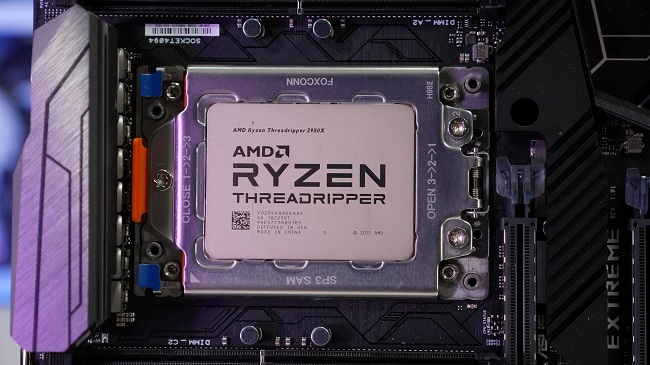
When choosing a rendering system processor, you should pay attention to the elements of your projects and their volume and number. It would be best to consider whether most of your computer rendering time is spent interacting with or rendering the project.
Suppose the majority of your time in using the Rendering computer is spent interacting or working on the project, and it does not take much time to render. In that case, it is better to think about processors with a higher frequency and IPC and not go for models with more processing cores.
Intel’s new generation Core I and AMD’s Ryzen processors suit this kind of user. Of course, limiting your choice to models with K or X extension is better, which have higher thermal design power (TDP) and frequency. Of course, choosing the latest generation of Intel or AMD processors for a particular rendering case is not always necessary. One or two previous generations can have a higher purchase value and a lower cost.
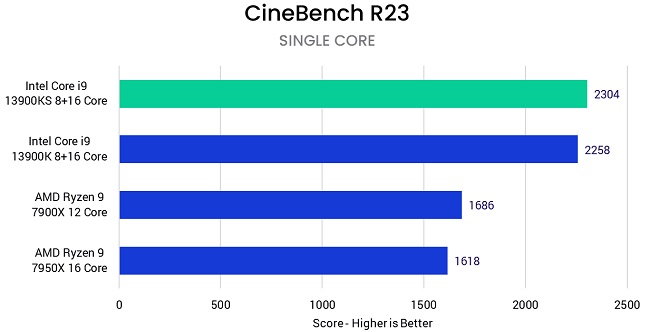 Comparison of single-core performance
Comparison of single-core performance
An excellent way to find a suitable processor for your rendering case is to look at the CPU score of the Cinebench R23 benchmark. Single-core performance in this benchmark is ideal for you.
Processors such as the AMD Ryzen 9 7950X or the Intel i9 13900K are the best choice for 3D modeling and uses that rely heavily on project interaction. At the same time, these processors, with many processing cores, perform very well in Rendering.
But if most of your time using the rendering computer is spent on the Rendering itself, and you are less busy interacting with your project, you should go for processors with more processing cores. The best choices are AMD Threadripper and models like Threadripper PRO 5995WX.
 Multi-core performance comparison
Multi-core performance comparison
You can use the Cinebench R23 multi-core benchmark test score to compare the rendering processor.
Suppose your work is professional, your projects are cumbersome, and Rendering takes time. In that case, you need a unique rendering workstation or specialized systems with multiple processors. Multi-socket systems based on Intel Xeon processors are an example of them.
Choosing a graphics card for computer rendering
The more powerful graphics card you get with more CUDA cores and higher video memory, the better performance from the rendering case. But you will not see better results by buying the most powerful graphics card.
If your rendering engine supports a graphics card or GPU, Nvidia’s high-end graphics cards are the best choice. In the lower steps, weaker models are placed. For example, the RTX 4090 is an excellent choice for a rendering case.
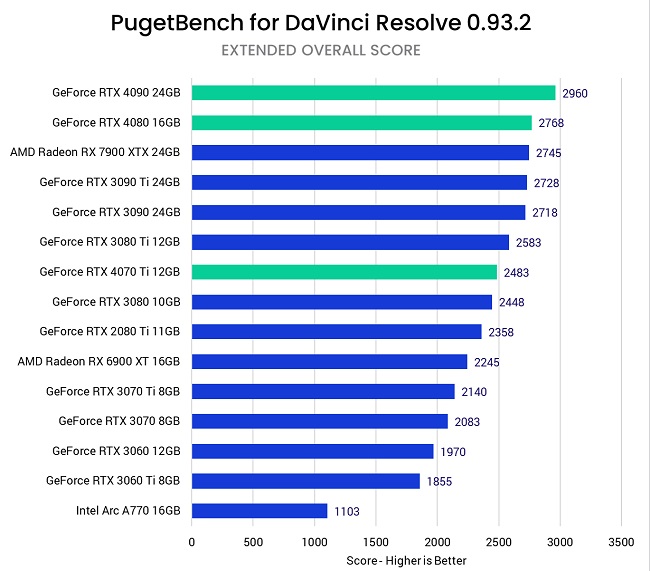
When choosing a graphics card for computer rendering, you should focus on models with the highest CUDA cores and high video memory. Mostly Nvidia’s RTX xx70 cards have this feature and are not expensive at the same time. Also, Nvidia’s Ti and Super cards are among the models with more CUDA cores and higher memory bandwidth.
Be careful that a more powerful graphics card does not always work wonders for the rendering system; it depends entirely on your usage and conditions. For example, if higher performance and speed in Viewport is your primary goal, a more powerful graphics card will not have a tangible effect. A more powerful CPU is more critical for a particular rendering case. But if advanced graphics effects and techniques such as SSAO, Ambient Occlusion or Anti-Aliasing, and the like must be applied in the Viewport, a strong graphics card will be pretty helpful.
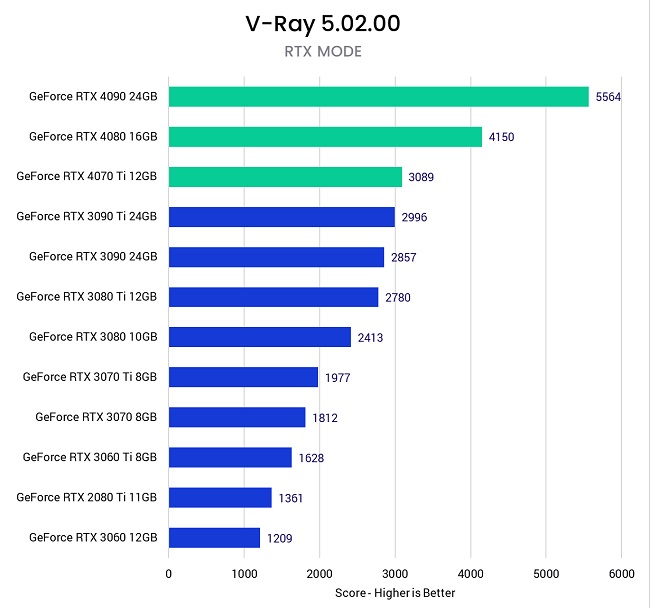
We can say that Nvidia’s RTX xx60 to RTX xx90 graphics cards are suitable for computer rendering, and you can choose according to your budget and needs.
Unfortunately, support for AMD graphics cards in rendering engines is unsuitable, and Nvidia RTX graphics cards are recommended for computer rendering.
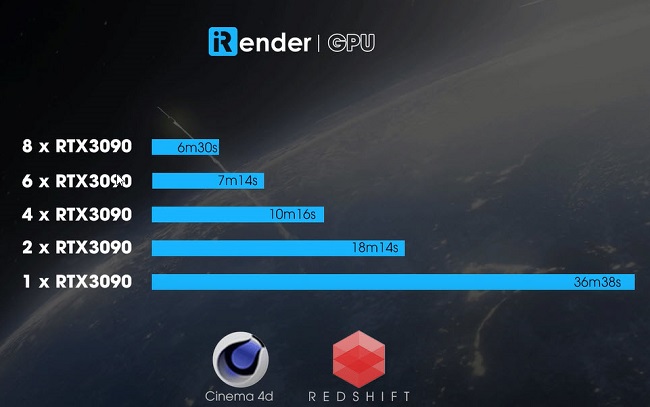 Comparison of one card with several graphics cards in Rendering
Comparison of one card with several graphics cards in Rendering
Mid-range to high-end graphics cards, such as Nvidia’s RTX 4070 Ti, are the best and most valuable choices for rendering systems. Of course, you may need more than one graphics card in robust rendering systems. But if your budget doesn’t reach that model, the RTX 3070 is also an excellent choice for a rendering computer.
Check benchmarks such as VRAY, Octane, and Redshift from the latest sources to make your work easier in choosing a graphics card for computer rendering.
Suitable RAM for the rendering system
The Rendering computer’s RAM should also be selected according to your needs. However, getting at least 32 GB of RAM for the rendering case is better.
Be careful to use two- or four-channel RAM for the particular rendering case, and the combination of modules should not be limited to single-channel mode. Also, look for high-speed and low-timing RAM kits for exceptional rendering cases.
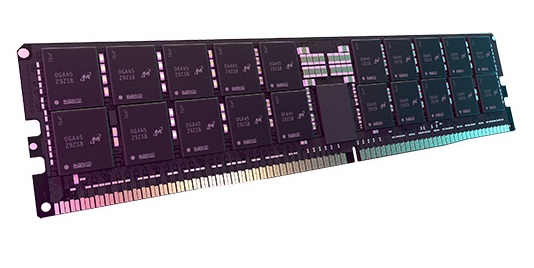
The best available choice for rendering systems is 4800MHz DDR5 RAM modules. Of course, to use DDR5 RAM in the rendering system, the motherboard and processor must also have this possibility.
When choosing RAM for computer rendering, choose reputable and well-known brands with high-quality memory chips and low timing. In the Rendering Workstation computer, you can use RAM equipped with ECC technology to increase reliability. Depending on your needs, you may even need 128 GB of four-channel RAM for the rendering computer.
Suitable motherboard for Rendering computer
When choosing a motherboard for a particular rendering case or computer, you don’t necessarily need an expensive one. Still, it would be best to match your needs regarding the volume and frequency of supported RAM, the number of expansion slots, the variety of ports, and the number of M.2 slots. Choosing a mother choosing rendering case from mid-range models —with high-quality parts are bewitched heat sinks to dissipate heat from the processor power supply circuit.
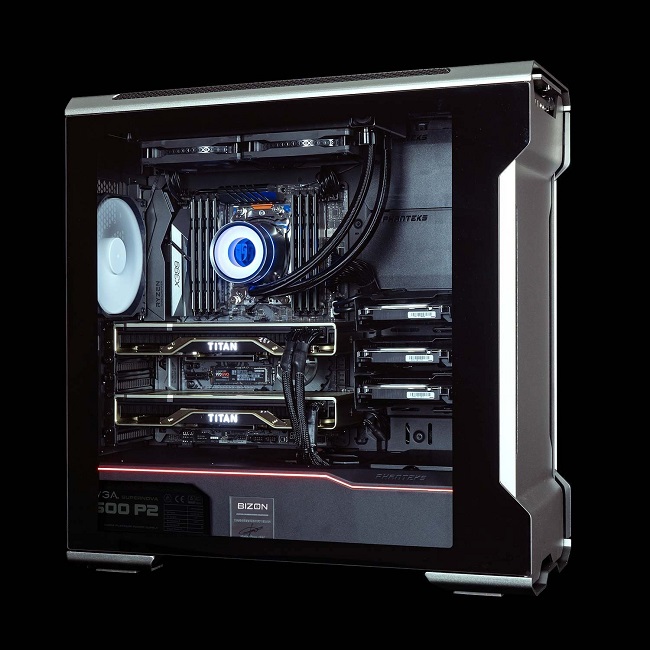
Another critical point in choosing a motherboard for a rendering system is paying attention to the supported PCIe generation and the number of PCIe lanes. Usually, higher-end chipsets have more PCIe communication lines for installing expansion cards and more high-speed SSDs.
If you use many components such as a hard disk, SSD, expansion card, or several graphics cards simultaneously, go for HDET platforms such as AMD Threadripper PRO or Intel’s Xeon are much richer in terms of the number of PCIe lanes and features. They are common desktop platforms.
SSD memory is suitable for rendering computer
If you want to render large projects on SSD, choose an SSD with high durability. Loading projects, and generating output onto high-speed NVMe SSDs, can save you a lot of time. Therefore, getting a high-speed PCIe x4 SSD with a capacity of 512 GB or higher for the Rendering computer is better.
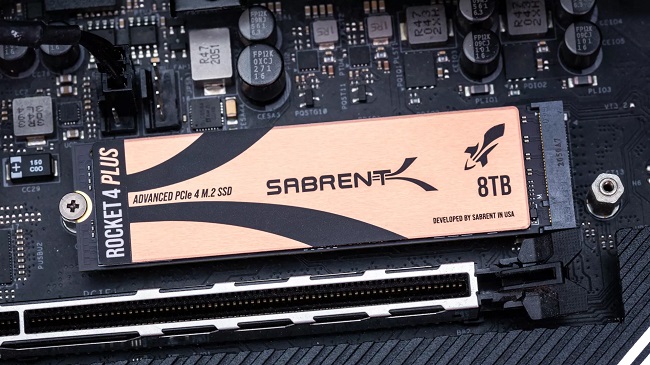
Another advantage of using an SSD instead of a hard disk in the rendering system is using AutoSave or automatic backup so that the results are not lost for hours or even days in cases such as power outages or system crashes.
Also, for rendering systems, it is better to get a high-capacity hard disk for backing up or archiving projects.
Suitable case and power for the rendering system
Case or power does not affect the rendering speed of your computer, but they are essential parts, and you can’t just pay attention to the cheapest ones.
A suitable case for a rendering system must have plenty of space and proper ventilation with sufficient high-quality and durable fans. If the ventilation of the patient or its interior is not enough, the system’s various fans inevitably work at high speed, which causes annoying noise pollution and wears them out more.
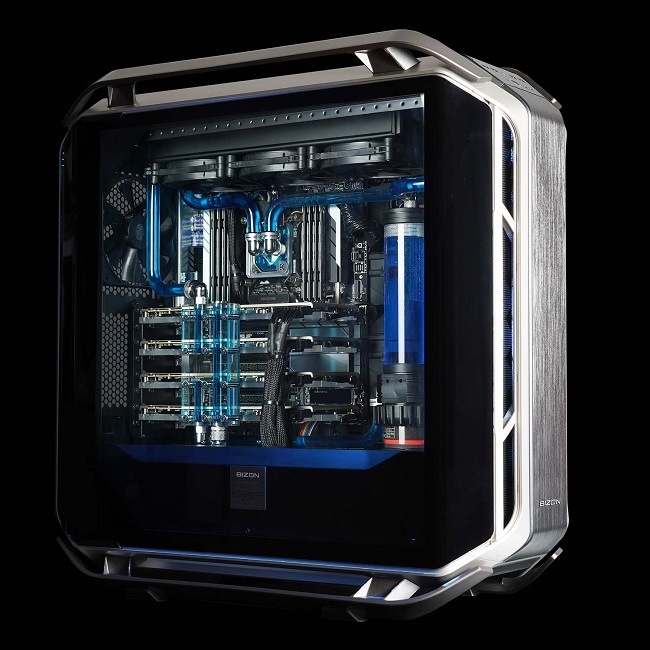
The power of the rendering system must have enough energy and be high quality and durable to withstand heavy use and work. Also, the power fan of the rendering computer should be high-quality and have low noise. All in all, it is better to get a high-quality and reliable power supply for the rendering system so that while it is reliable and does not damage expensive parts, it does not have problems in long-term use.
Get at least one power supply with a Gold energy efficiency certificate for the rendering case. Avoid getting cheap and economical power supplies for computer rendering so you won’t regret it.
Rendering system processor cooling
Another non-original part you must carefully choose in the Rendering computer is the processor cooler. In Computer Rendering, the processor or CPU is often powerful and at the same time under pressure for a long time. Therefore, a solid, efficient cooler should handle the processor’s heat well.
If you don’t use a strong cooler for the rendering computer, you will see annoying noise from the processor fan due to frequent speed changes or high-speed rotation. At the same time, increasing the processor’s temperature will decrease its frequency and efficiency, which is not ideal.
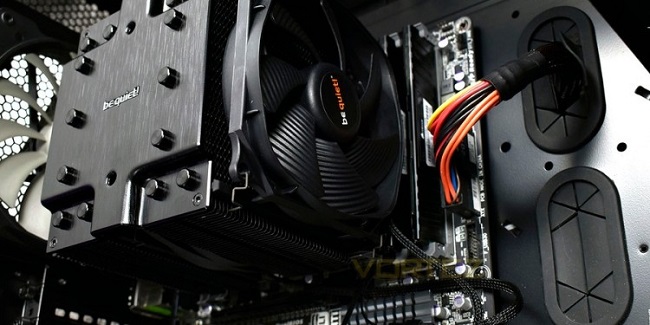
You can use high-quality water coolers for rendering systems, but it is strongly recommended to go for models with a 360 mm radiator and a low-noise fan and pump so that it does not bother you during long-term use.
Air coolers usually have less consumption and noise pollution than water coolers, but for computer rendering, be sure to use large air coolers equipped with high-quality fans. Also, an air cooler is recommended for rendering computers where case ventilation is vital. Otherwise, it is better to use a water cooler for generating cases.
The importance of high-quality parts in a particular rendering case
Rendering is a heavy and often time-consuming process, so the computer parts of the Rendering are more stressed. For example, fans in cases, power supplies, and various coolers may break down or make annoying noise very soon. For this reason, you should not look for graphics cards made by different brands, cheap power, or features without proper heat dissipation in a particular rendering case.
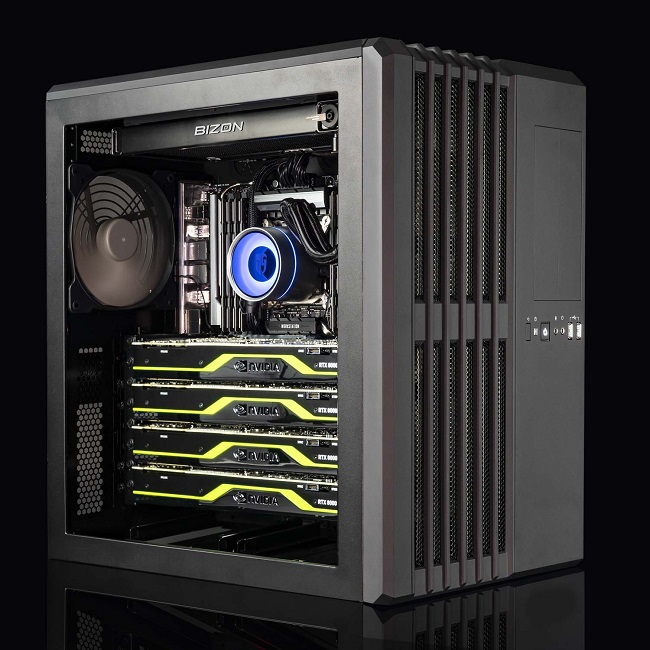
It would be best to be careful that the low-quality fans used in various parts are primarily noisy. Therefore, buy components such as graphic cards, power, RAM, SSD, and more relaxation from reliable, high-quality brands.
What has been said does not necessarily mean buying expensive parts. For example, getting a valid graphics card with a suitable cooler is enough, and you don’t necessarily need a heavily overclocked or costly model. At the same time, graphics cards with a simple cooler or a fan are not suitable for a rendering case.
Another issue is overclocking. While the performance boost from overclocking is tempting, it’s not recommended for rendering systems at all. Overclocking causes a sharp increase in heat and consumption of parts, increasing the chance of failure and the possibility of growing instability. It is even better not to use an overclocked graphics card for gaming systems or to use it in normal mode without overclocking, which is usually possible through manual selection.
The difference between rendering and gaming systems
You may have noticed the similarities between the gaming system and Rendering and asked what the difference between the rendering system and gaming is.
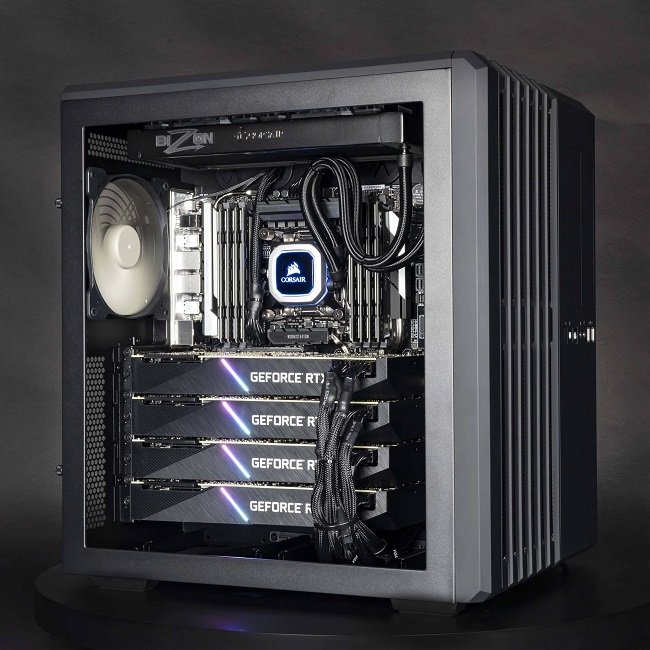
While gaming systems can have a strong processor, a strong graphics card, and a high RAM just l, like a rendering computer, the use of these two is not the same, and there are significant differences. For example, in rendering systems, the focus is more on the CPU, while in gaming systems, the graphics card is the main focus.
Also, the flashy parts of gaming systems aren’t necessarily necessary for rendering techniques, and higher performance can be achieved at a lower cost. At the same time, rendering systems are usually under more pressure and stress.
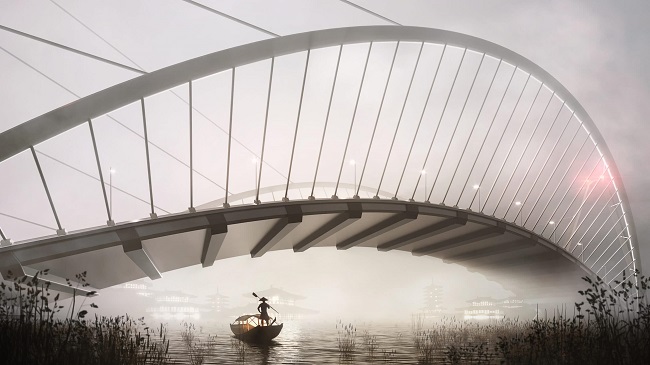
Summary and closing remarks
Although using standard or gaming systems for Rendering is possible, buying a rendering system is much better. Rendering requires a robust and specialized system with high processing power, sufficient RAM, and heat dissipation. The price of the rendering system will be different based on its parts.
With enough skill and a powerful rendering computer, you can create realistic images indistinguishable from reality.
But if Rendering is not your primary computer, you can use it for rendering by purchasing a gaming system with suitable and high-quality components. In this case, be sure to pay attention to a strong processor, a suitable cooler and subject, and the use of high-quality parts.
Does a rendering computer need a better CPU or GPU?
In general, it can be said that the CPU is more critical than GPU in the rendering system. However, if you can use GPU rendering, there are advantages.
Does the amount of computer RAM help the rendering system?
RAM is one of the most critical components in computer rendering, and you must have enough RAM. However, the amount of RAM does not directly affect the rendering speed, and its volume should be sufficient.
